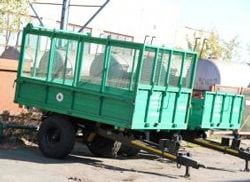
The device and principle of operation of a modern torque converter
Content
The first torque converter appeared more than a hundred years ago. Having undergone many modifications and improvements, this efficient method of smooth transmission of torque is used today in many areas of mechanical engineering, and the automotive industry is no exception. Driving is now much easier and more comfortable as there is no longer a need to use the clutch pedal. The device and principle of operation of the torque converter, like everything ingenious, is very simple.
The story of
For the first time, the principle of transferring torque by recirculating fluid between two impellers without a rigid connection was patented by the German engineer Hermann Fettinger in 1905. Devices operating on the basis of this principle are called fluid couplings. At that time, the development of shipbuilding required designers to find a way to gradually transfer torque from a steam engine to huge ship propellers in the water. When tightly coupled, the water slowed down the jerk of the blades during start-up, creating an excessive reverse load on the motor, shafts and their joints.
Subsequently, the modernized fluid couplings began to be used on London buses and the first diesel locomotives in order to ensure their smooth start-off. And even later, fluid couplings made life easier for car drivers. The first production car with a torque converter, the Oldsmobile Custom 8 Cruiser, rolled off the assembly line at General Motors in 1939.
The device and the principle of operation
The torque converter is a closed chamber of a toroidal shape, inside of which pumping, reactor and turbine impellers are coaxially placed close to each other. The internal volume of the torque converter is filled with fluid for automatic transmissions circulating in a circle from one wheel to the other. The pump wheel is made in the converter housing and is rigidly connected to the crankshaft, i.e. rotates with engine speed. The turbine wheel is rigidly connected to the input shaft of the automatic transmission.
Between them is the reactor wheel, or stator. The reactor is mounted on a freewheel clutch that allows it to rotate in only one direction. The blades of the reactor have a special geometry, due to which the fluid flow returned from the turbine wheel to the pump wheel changes direction, thereby increasing the torque on the pump wheel. This is the difference between a torque converter and a fluid coupling. In the latter, there is no reactor, and, accordingly, the torque does not increase.
Principle of operation The torque converter is based on the transfer of torque from the engine to the transmission by means of a recirculating fluid flow, without a rigid connection.
A driving impeller, coupled to the rotating crankshaft of the engine, creates a fluid flow that hits the blades of an opposing turbine wheel. Under the influence of fluid, it sets in motion and transmits torque to the input shaft of the transmission.
With an increase in engine speed, the rotation speed of the impeller increases, which leads to an increase in the force of the fluid flow that carries the turbine wheel. In addition, the liquid, returning through the blades of the reactor, receives additional acceleration.
The fluid flow is transformed depending on the speed of rotation of the impeller. At the moment of equalization of the speeds of the turbine and pump wheels, the reactor impedes the free circulation of the liquid and begins to rotate due to the installed freewheel. All three wheels rotate together, and the system starts working in fluid coupling mode without increasing torque. With an increase in the load on the output shaft, the speed of the turbine wheel slows down relative to the pumping wheel, the reactor is blocked and again begins to transform the fluid flow.
Advantages
- Smooth movement and starting off.
- Reducing vibrations and loads on the transmission from uneven engine operation.
- Possibility to increase engine torque.
- No need for maintenance (replacement of elements, etc.).
Disadvantages
- Low efficiency (due to the absence of hydraulic losses and rigid connection with the engine).
- Poor vehicle dynamics associated with the cost of power and time to unwind the fluid flow.
- High price.
Lock mode
In order to cope with the main disadvantages of the torque converter (low efficiency and poor vehicle dynamics), a locking mechanism has been developed. Its principle of operation is similar to the classic clutch. The mechanism consists of a blocking plate, which is connected to the turbine wheel (and therefore to the gearbox input shaft) through the springs of the torsional vibration damper. The plate has a friction lining on its surface. At the command of the transmission control unit, the plate is pressed against the inner surface of the converter housing by means of fluid pressure. Torque begins to be transmitted directly from the engine to the gearbox without the participation of fluid. Thus, a reduction in losses and a higher efficiency are achieved. The lock can be enabled in any gear.
Slip mode
The torque converter lock-up can also be incomplete and operate in a so-called “slip mode”. The blocking plate is not fully pressed against the working surface, thereby providing partial slippage of the friction pad. The torque is transmitted simultaneously through the blocking plate and the circulating fluid. Thanks to the use of this mode, the car's dynamic qualities are significantly increased, but at the same time the smoothness of the movement is maintained. The electronics ensure that the lock-up clutch is engaged as early as possible during acceleration, and disengaged as late as possible when the speed is reduced.
However, the controlled slip mode has a significant drawback associated with abrasion of the clutch surfaces, which, moreover, are exposed to severe temperature effects. Wear products get into the oil, impairing its working properties. The slip mode allows the torque converter to be as efficient as possible, but at the same time significantly reduces its life.

